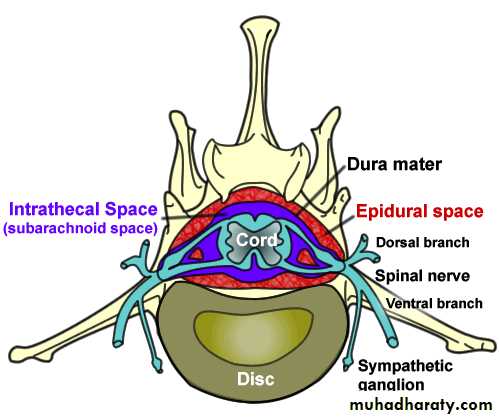Routes of Drug Administration
1-What is the best drug to be used?2-How it is going to be given?
In clinical practice the physician commonly encounters two important questions:Routes of Drug Administration
The route of administration (ROA) that is chosen may have a profound effect upon the speed and efficiency with which the drug actsImportant
Info!No single method of drug administration is ideal for all drugs in all circumstances
Very ImportantInfo!
1-Entral route (i.e. through the gastrointestinal tract)
2-Parentral (i.e. outside the gastrointestinal tract)
But in our daily practice the term parental is reserved for injections; that is why we can add a third category called:
3- Other routes of administration. (Topical, Inhalation…..etc.)
Generally there are two main routes of drug administration:A-Oral rout:
Advantages:1-Convenient - portable, no pain, easy to take.
2-Cheap - no need to sterilize (but must be hygienic of course).
3-Variety - fast release tablets, capsules, enteric coated, layered tablets, slow release, suspensions, mixtures…etc.
1-Entral route of administration:
1-Sometimes inefficient - high dose or low solubility drugs may suffer poor availability; only part of the dose may be absorbed.2- First-pass effect - drugs absorbed orally are transported to the general circulation via the liver.
3- Food and G-I motility can effect drug absorption.
4-Local effect - Antibiotics may kill normal gut flora and allow overgrowth of fungal varieties.
5-Unconscious patient - Patient must be able to swallow solid dosage forms. Liquids may be given by tube.
Disadvantages:
Advantages:
1-First pass - The liver is by-passed thus there is no loss of drug by first pass effect.2-Rapid absorption - Because of the good blood supply to the area absorption is usually quite rapid.
3-Drug stability - pH in mouth relatively neutral (cf. stomach - acidic). Thus a drug may be more stable.
B-Buccal/Sublingual:
1-Holding the dose in the mouth is inconvenient.2-If any is swallowed that portion must be treated as an oral dose and subject to first pass metabolism.
3-Small doses only can be accommodated easily.
Disadvantages:
Advantages:
1-By-pass liver - Some of the veins draining the rectum lead directly to the general circulation, thus by-passing the liver.2-This route may be most useful for patients unable to take drugs orally or with younger children.
C-Rectal: (suppository or enema.)
1-Erratic absorption - Absorption is often incomplete and erratic.2-Not well accepted
Disadvantages:Subcutaneous (SC.)
This involves administration of the drug dose just under the skin.Advantages:
1-Can be given by patient, e.g. in the case of insulin
2-Absorption slow but usually complete.
2-Parentral route of administration (IV. IM. SC.)
1-Can be painful2-Irritant drugs can cause local tissue damage
3-Maximum of 2 ml injection thus often small doses limit use.
Disadvantages:
Advantages:1-Larger volume, than sc, can be given by IM
2-A depot or sustained release effect is possible with IM injections, e.g. procaine penicillinIntramuscular(IM.)
1-Trained personnel required for injections. The site of injection will influence the absorption.2-Absorption is sometimes erratic, especially for poorly soluble drugs, e.g. diazepam, The solvent maybe absorbed faster than the drug causing precipitation of the drug at the site of injection.
Disadvantages:
Advantages:
1-Rapid - A quick response is possible2-Total dose - The whole dose is delivered to the blood stream. Large doses can be given.
3-Veins relatively insensitive to irritation by irritant drugs at higher concentration in dosage forms.Intravenous (IV.)
1-Suitable vein - It may be difficult to find a suitable vein.2-Maybe toxic - Because of the rapid response, toxicity can be a problem with rapid drug administrations.
3-Requires trained personnel - Trained personnel are required to give intravenous injections.
4-Expensive - Sterility, pyrogen testing and larger volume of solvent means greater cost for preparation, transport and storage.
Disadvantages:
Inhalation:
Absorption of gases is relatively efficient, however solids and liquids are excluded if larger than 20 micron Particles larger than 20 micron impact in the mouth and throat.This route of administration can be used for:
1-Local effect - bronchodilators
2-Systemic effect - general anesthesia
3-Other routes of administration1-Local effect - eye drops, creams, ointments, etc.
2-Systemic effect - e.g., nitroglycerin transdermal patch.Topical
This means injecting the drug into the synovial fluid to get a direct local action of the drug into the joint space.e.g. local steroid hormone injections.
Intra articular injection:
This means injecting the drug into the cerebrospinal fluid (CSF), through a special CSF needle by making a puncture through L3-L4, or L4-L5, intervertebral space.
This method is commonly used in the setting of chemotherapy regimen in CNS prophylaxis or treatment.
Itrathecal injections:
This technique is somewhat similar to the intrathecal injection, except that the injection is given in the epidural space.
It is commonly used to give local analgesia during labor.
Epidural injection:
Means injecting the drug directly into the pleural space to induce pluerodesis(obliteration of the pleural space),or to give chemotherapy directly to the pleural or peritoneal space
Itraplueral &intraperetonial injection:
No single method of drug administration is ideal for all drugs in all circumstancesVery Important
Info!




